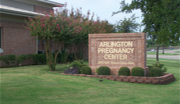St. Augustine 101
by Jason Ballou
St. Augustine grass is the most common grass in the north Texas area. In established lawns it is the grass of choice primarily because of its shade tolerance. Bermuda grass is another popular grass, but it requires twice as much sun and does not do well under trees.
Through the years I have observed many clients who have lush, green lawns year after year with few problems while for others it is a constant struggle. There are three key elements to successfully growing St. Augustine: water, sun and nutrients. All are necessary and all must be in the correct proportions. Doing a good job on two, but neglecting one is a recipe for failure.
Water is the most important of the three. A lawn without water can die in a few days in the Texas heat. St. Augustine should be watered thoroughly, but as
infrequently as possible. A good watering once or twice a week is ideal. A very common mistake is watering every day or every other day. Overwatering and watering too frequently can lead to fungal
diseases such as gray leaf spot, brown patch and take all root rot. It is also important to not water in the evenings because this leaves the grass moist all night which also can cause gray leaf spot
in the hot summer months. Allow the soil to dry a bit in between waterings, but not to the point of causing the grass to wilt.
Sunlight is another essential element. Many times I have heard a customer wonder; "Grass used to grow here under the trees. I don't understand why it won't grow now." Trees grow. It is that simple and if you are trying to grow grass under trees you will have to keep them well trimmed. St. Augustine will need four hours or more of direct sun a day. Keep the trees trimmed up creating avenues for sunlight to enter early and late in the day. Thinning the trees will let light filter though the trees during the middle of the day. Try not to mow the grass too low in deep shade. Mowing very low in the shade will cause it to fade out more quickly.
Nutrients are another key. You wouldn't be very healthy if you didn't eat regularly. The same goes for your lawn. Fertilize your lawn three or four times per growing season. Use a 3-1-2 ratio fertilizer or one similar with a slow release formula. Be consistent, but don't over do it and put down too much. Too much fertilizer can damage your lawn.
If you get these three elements to the lawn in the right proportions you should improve the health of your lawn. Even the best cared for lawn will have its setbacks. Extended periods of rainy weather can cause problems as can hot, dry weather.
The most common disease in St. Augustine is a fungal disease called take all root rot (TARR) of St. Augustine. It begins with the grass blades turning a bright yellow. It then progresses to rotting runners and dying grass. Instead of bright green the runners will turn yellow with brown and black lesions. They then rot and the grass dies. This disease is more prevalent in areas that get more water or where water tends to stand. There are no effective fungicides for treating this disease. The solution is topdressing with peat moss. The low ph of the peat creates an environment in which the fungus cannot survive. Usually the grass begins to improve in several weeks.
In the hot, dry months (June-Sept.) be on the look out for chinch bugs. These extremenly small beetles chew on the runners of St. Augustine poisoning it with their saliva. The results are irregular dead spots. Chinch bugs can be deceptive because they make a lawn look like it is not getting enough water. If you are watering your lawn and don't understand why it is still dying you probably have chinch bugs.
Also, in the hot summer watch out for gray leaf spot. This fungal disease shows up during extended periods of rain during hot weather. It begins with little dead spots appearing on the blades of grass. They will be ringed with a bit of gray or black. As the disease progresses the grass begins to die. Many times this disease will go away just by scaling back on the water. More serious cases may require fungicide treatments.
As the weather begins to cool off watch for expanding rings of brown grass forming. This is a fungal disease called brown patch. It also is caused by extended periods of moisture. Brown patch is also treated with fungicides.
Grubs are another problem at times, but in my opinion are greatly over rated as a lawn pest. If you have a street light in your front yard or keep an exterior light on all the time you might be at risk of having grubs. June bugs are attracted to the lights and when they lay their eggs they do it at the closest, most convenient location, your lawn. If you have lights outside you may benefit from grub treatments, but otherwise you are better spending your time focusing on the other aspects of caring for your lawn.
St. Augustine can be a difficult and problematic grass to grow, but if you stick to these basics and are consistent you will avoid most of the difficulties that you may have experienced in the past.



